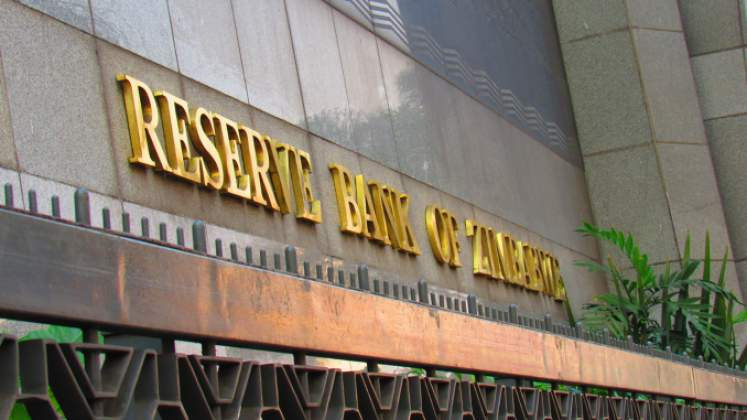
THE Reserve Bank of Zimbabwe (RBZ) recently announced the operationalisation of a collateral registry.
There is no argument that access to credit finance is crucial for private sector growth, especially in developing economies where it remains a major constraint for many.
Removing this barrier can trigger significant increase in productivity, economic growth and development.
It is estimated that about 80% of private firms in sub-Saharan Africa do not have access to credit due to their inability to utilise valuable movable assets as collateral.
Compare this to developed economies, where an estimated 78% of capital stock is in movable assets such as machinery, equipment and receivables and only 22% is in immovable property.
In order to reduce asymmetric information problems associated with extending credit and increase the chances of loan repayment, banks naturally need collateral from borrowers.
In Zimbabwe, banks have tended to favour immovable assets to be pledged as collateral and this has limited the access to loans for many who do not own immovable property, especially small and medium enterprises (SMEs) who may have valuable movable assets, but are unable to leverage them.
In addition, the lack of accurate and up-to-date information on borrowers has tended to further stifle access to credit.
- RBZ blocks Harare US dollar charges
- Industry cries foul over new export surrender requirements
- One stitch in time saves nine
- Banks keep NPLs in safe territory
Keep Reading
A collateral registry of movable assets removes barriers to credit for many, while opening up investment opportunities, especially for entrepreneurs and SMEs.
A collateral registry is also seen as a smart way to create access to finance, particularly for women and young entrepreneurs who mostly do not have banking history or own immovable property.
A collateral registry is simply an electronic record or database of assets which have been pledged as security for loans.
One can go to the bank and pledge an asset as collateral for a loan and the bank can access the registry, for example, to see if the asset is free to be collateralised, thus avoiding multiple pledges.
Any interested party can, therefore, find out if there is any prior registration against an asset offered by the borrower as collateral.
This, therefore, reduces the risk and ultimately, the cost of lending and for effectiveness, the database must be accurate, up to date and easily accessible.
Utilising movable assets as collateral is a critical enabling factor for many businesses.
Movable assets normally account for capital stock of private companies,especially SMEs and mainly in developing economies.
For example, in the United States, movable property makes up about 60% of enterprises’ capital stock and lenders consider such assets to be excellent sources of collateral.
Movables account for around 70% of small business financing.
The asset-based lending industry in the United States has been growing rapidly and the volume of movable asset lending has increased 40-fold over 30 years.
In addition to legal requirements of lending, a well-functioning collateral registry is essential for economic growth and development.
Research has shown that the introduction of collateral registries is associated with an increase in the likelihood that a company has a bank loan, a line of credit, or overdraft, a reduction in the cost of borrowing and access to longer term loans.
Collateral registries, therefore, have a dramatic positive impact on economic growth and development by providing the free flow of credit, while reducing potential losses that may be faced by lenders.
This must, of course, be supported by a functional and effective legal framework and the appropriate infrastructures.
Economic research also suggests that small and medium-sized businesses in countries that have stronger secured transactions laws and registries have greater access to credit, better ratings of financial system stability, lower rates of non-performing loans, and a lower cost of credit. The end result is higher productivity and more growth.
According to a World Bank research on secured transaction systems and collateral registries, the key features of the efficient and effective operation of a collateral registry include:
There should be only one database in which information is captured and retained, and from which information may be retrieved.
A unified database provides complete information relating to any registration effected against the movable property of a debtor regardless of the location of the debtor or whether the debtor is a juridical person or a natural person.
Registration should serve only the legitimate purposes of registration.
Those purposes are (i) to give notice that a security interest may exist in the identified collateral and (ii) to provide evidence of publicity as the basis for the secured party’s priority in the collateral.
Registration in and searching of the registry database should not require the use of human discretion on the part of the registry staff.
The registry’s rules should eliminate randomness in acceptance or rejection of a notice and in determining what information to report on a search.
The registry should provide accurate information. The registry’s technology system should also be designed to detect or avoid errors in data entry as much as possible.
The registry should be available to users for registration and searching 24 hours a day, seven days a week via the Internet.
This will require appropriate information communication and technology (ICT) infrastructures to be in place.
Simplicity is crucial and the registry technology system should use simple, user- friendly interfaces for the majority of users who register notices via the internet.
Information requirements should be limited to only those relevant to the purposes of registration.
Costs of registration should be minimised. Such costs include both the costs of preparation and presentation of notices and the fees paid for registration and searching.
Registration fees should be assessed per notice, and should be set to recover only the costs of operation and capital replacement.
The registry should only permit documents to be added to the record, but never removed.
Since information in the registry database is determinative of priorities among competing interests in collateral, it is essential that the information be secure against all types of threats.
The types of security that must be considered include: (i) security of data against electronic tampering, (ii) security against natural or human-caused disaster, and (iii) physical security of the registry facility.
The Zimbabwean economy has become too in-formalised and there has been no incentive for entrepreneurs to formalise their businesses as there are no perceived benefits.
A collateral registry could be the means to create an environment where there are advantages to formalise small businesses in order for them to get access to affordable credit. This can only benefit both borrowers and the economy at large.
The successful implementation of this project and its effective operation and economic impact is important and must be accompanied by educating and creating awareness within the business sector and borrowers in general.
In addition, it will be crucial for the appropriate ICT infrastructure to be in place to allow broad universal access.
In conclusion, it is evident that collateral registries certainly have a positive impact on economic growth and development if implemented and managed effectively.
Lack of access to credit must, therefore, no longer be an excuse for our entrepreneurs and SMEs who should really be the key drivers of job creation and economic growth.








